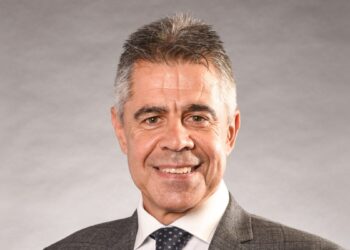Grant Abbott, chairman of the Succession, Asset Protection and Estate Planning Advisers Association and specialist adviser for Abbott and Mourly Lawyers, said on the surface, a large SMSF appears to be a smart financial move – more assets under management, more control, greater potential for higher returns and lower taxes – but for those with only one or two family members as trustee directors, large funds can be a “ticking time bomb”.
“While the opportunity to accumulate wealth within an SMSF is significant, so too are the risks,” he said.
“Lack of diversification, inadequate governance, continuous government tax changes, the taxation on unrealised capital gains, liquidity issues, and family disputes are just a few of the dangers that can unravel years of careful planning.”
Data from the ATO shows that of the 600,000-plus SMSFs in Australia, 40 per cent of funds hold more than $1 million to $2 million in assets, while 20 per cent of all funds have over $2 million under management.
“This concentration of wealth within a few hands, especially in family-controlled funds with one or two trustees, brings several inherent risks,” Abbott said.
“While managing a large SMSF might seem like a dream for control-minded investors, it is important to recognise that bigger isn’t always better especially if the fund is controlled by only one member and by that I mean the mum and dad funds.”
He continued that one and two-member funds make up 94 per cent of all SMSFs and generally only one of the members makes the investment decisions and runs the fund.
Abbott said that due to this there are a number of potential issues including a lack of diversity in decision-making.
“When the decision-making power lies in the hands of one individual, there is an increased risk of narrow investment strategies,” he said. “The absence of diverse opinions can lead to biased decisions that fail to consider all investment options, potentially hampering the fund’s performance.”
A large fund can also pose a heightened risk of mismanagement, as it demands careful oversight to ensure compliance with SMSF regulations.
“Without proper knowledge or external guidance, one or two trustees may overlook important legal obligations, leading to mismanagement or inadvertent non-compliance, resulting in severe penalties or losses,” Abbott continued.
He cautioned that as the fund size increases, the stakes become higher when errors occur, and often the accountant or auditor doesn’t discover these issues until it’s too late.
“Larger SMSFs also often face greater scrutiny from auditors and regulators. The risk of an audit increases with the size of the fund, and the complexity of managing such a fund can lead to higher compliance costs. For trustees with limited resources or expertise, this can be a significant burden on the fund’s overall performance.”
Moreover, Abbott explained that large SMSFs with substantial holdings in illiquid assets may face liquidity challenges in meeting pension obligations or addressing members’ needs as pension valuation factors rise with age.
“With only one or two trustees, finding a solution for liquidity issues often results in forced asset sales at unfavourable times, leading to potential financial loss or worse still not making minimum pension payments,” he said.
Another potential issue that can arise concerns inadequate succession planning, and can leave a fund with significant legal problems.
“If a trustee passes away or becomes incapacitated, the remaining trustee may not have the skills, knowledge, or resources to manage the fund, leaving the SMSF vulnerable to mismanagement or forced winding-up,” he said.
“Family-run SMSFs are also highly susceptible to disputes, especially when there are only one or two trustees involved. Conflicts over investment decisions, contributions, or benefit payments can lead to long-term issues, including the breakdown of relationships and costly legal battles.”
Abbott concluded that while large SMSFs with over $1 million or even $5 million in assets may seem like the ideal vehicle for maximising control and building wealth, the reality is that size brings complexity and risk.
“It is essential for trustees to recognise these dangers and take proactive steps to mitigate them. Whether through seeking professional SMSF advice, establishing robust governance frameworks, or creating clear succession plans, SMSF trustees must ensure that they are not only growing their wealth but also protecting it for the long term,” he said.
“In the end, the true value of an SMSF is not just in its size but in how well it is managed, safeguarded, and passed down through generations.”


